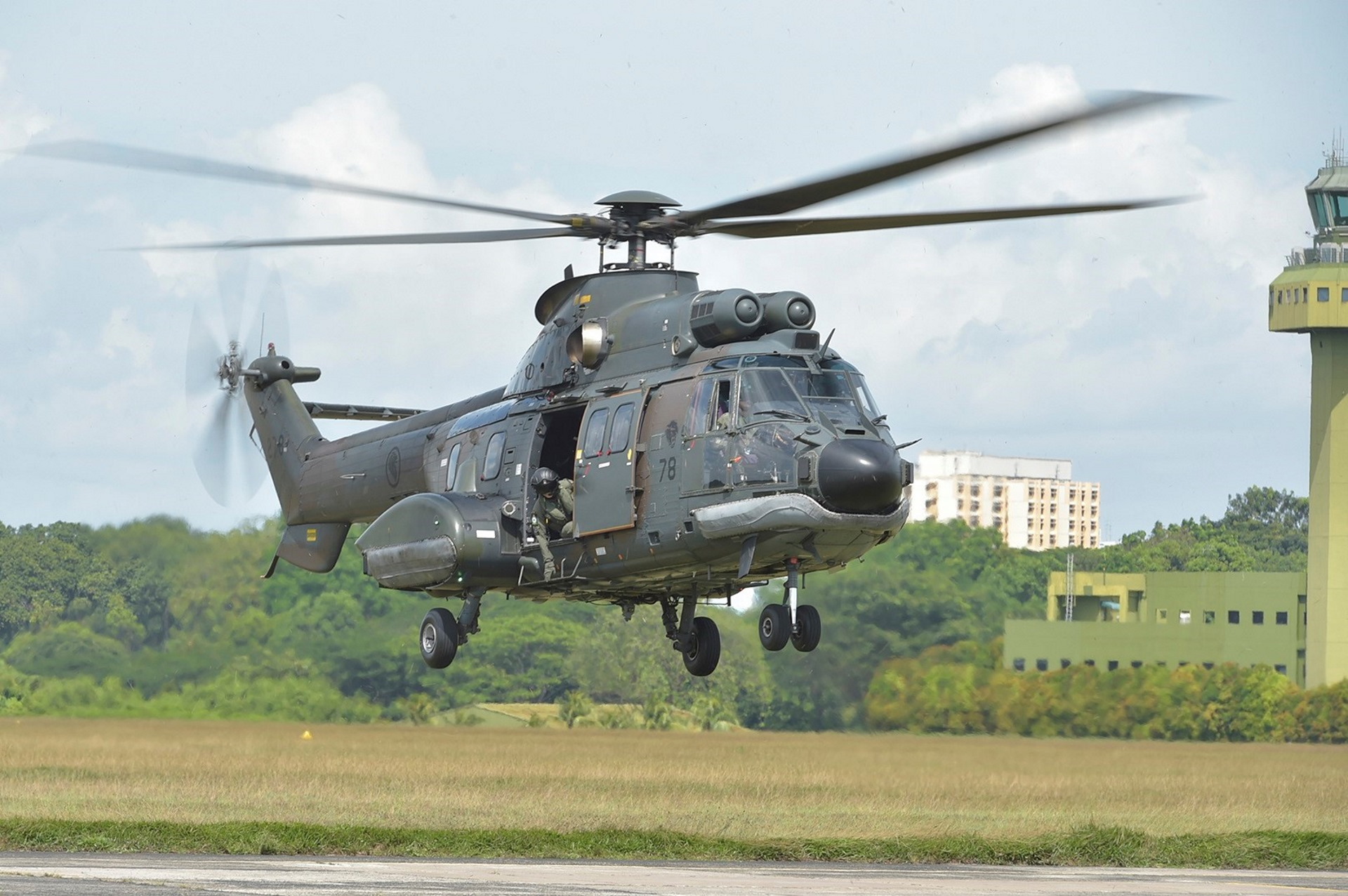RSAF'S SUPER PUMAS MARK 35 YEARS OF SERVICE
Old but gold: As the Republic of Singapore Air Force's (RSAF's) Super Pumas turn 35, here's a look at some facts about these helicopters and the operations they've taken part in over the years.//Story by Teo Jing Ting
//Photos by PIONEER photographers & courtesy of RSAF
1) The RSAF welcomed the Super Puma into its fold in October 1985.
Acquired to meet greater operational demands in the RSAF, the AS-332 Super Puma helicopters became fully operational by 1986.
Since then, they have become the Singapore Armed Forces' (SAF's) main source of air support for troop lift, resupply as well as Search and Rescue (SAR) operations.
The Super Pumas reside under 125 and 126 Squadrons, which are both located at Sembawang Air Base.
2) They used to fly the state flag at the National Day Parade (NDP).
The State Flag Flypast made its debut in 1970, and was flown by the Aerospatiale SA316B Alouette III helicopter from 120 Squadron. Back then, the flag measured 3m x 2m.
In 1986, the Super Pumas took over the flag-flying duties and carried a flag that measured nearly 30m x 20m. This set a then-world record for the largest state flag to be flown.
The Super Puma last flew the state flag at the 2000 NDP, with the CH-47D Chinook taking over the following year.
3) Super Puma crew are trained at the Oakey Training Centre in Queensland, Australia.
The Super Pumas first arrived at Oakey Army Aviation Centre on 1 Sep 1998 to form the Oakey Training Centre, under an agreement signed with the Australian Government in 1996.
The Oakey agreement allowed the RSAF to deploy up to 16 helicopters to train its pilots in the area, which has a training airspace 17 times the size of Singapore. This gives pilots the opportunity to sharpen their skills and conduct realistic flying training, as well as strengthen air-land integration with the Singapore Army.
In 2012, Minister for Defence Dr Ng Eng Hen and then-Australian Minister for Defence Stephen Smith signed an agreement extending the RSAF's helicopter training in Oakey for another 15 years till 2027.
4) The Super Puma is the first RSAF asset to participate in Exercise Wallaby.
Since 1993, they have been a mainstay in the exercise, conducting a wide array of missions supporting the Singapore Army's training activities such as troop lift, heliborne medical evacuation and SAR.
5) These helicopters have participated in several counter-terrorism exercises locally and overseas.
To tackle growing terror and maritime threats, the Super Pumas have expanded their suite of operations to transport Special Operations Task Force (SOTF) troopers for troop insertion, providing them with greater mobility for rapid insertion via the air.
For example, SOTF teams roped onto the roof of a "terrorist" hideout as well as "hijacked" ship from the Super Puma during the ASEAN Defence Ministers' Meeting (ADMM)-Plus Maritime Security and Counter-Terrorism Exercise in 2016.
When it comes to protecting Singapore’s waters, Super Pumas can also be used as an overhead escort to protect cargo on board merchant vessels, as seen in Exercise Apex in 2012. The exercise helped to foster a strong working relationship among the different national agencies to ensure the ship arrives safely at port.
6) The Super Puma took part in Search-and-Rescue Exercise (SAREX) MALSING for the first time in 2019.
This five-day bilateral exercise between the RSAF and the Royal Malaysian Air Force (RMAF) involved SAR aircrew, ground crew and medical teams from both forces. It was the first time the exercise, which began in 2018, featured the Super Puma helicopter and an RMAF EC725 helicopter in SAR scenarios.
Apart from planning and executing the joint aerial search and medical evacuation operations, personnel also exchanged professional knowledge and discussed areas of mutual interest.
7) The striking red-and-white Super Pumas are specifically set aside for SAR missions.
Painted red and white, these helicopters form part of a 24/7 SAR team called Rescue 10.
Some of its prominent rescue missions include the USS John McCain collision incident in August 2017 and, most recently, a double rescue operation involving a badly burnt crewman from a tanker ship and three men who were stranded in the ocean after their yacht caught fire in January this year.
8) Rescue 10 consists of a six-man team.
Once the alarm is activated, the crew – which usually comprises a pilot; co-pilot; winch operator; winchman; doctor and a medic – can be up in the air in less than 15 minutes.
The pilot and co-pilot are in charge of flying the helicopter, pinning the exact location of the rescue, and establishing communication with the vessel the casualty is on. If they have time, they scour the Internet for information on the type of vessel they’re conducting the mission on to identify suitable winching points.
Upon reaching the vessel, the winchman will be winched down together with the doctor to rescue the casualty. The winch operator ensures that the cabin is secured before winching them back up safely.
Once on board the helicopter, the doctor and the medic will take over to perform interim treatment while the casualty is rushed to the nearest hospital.










